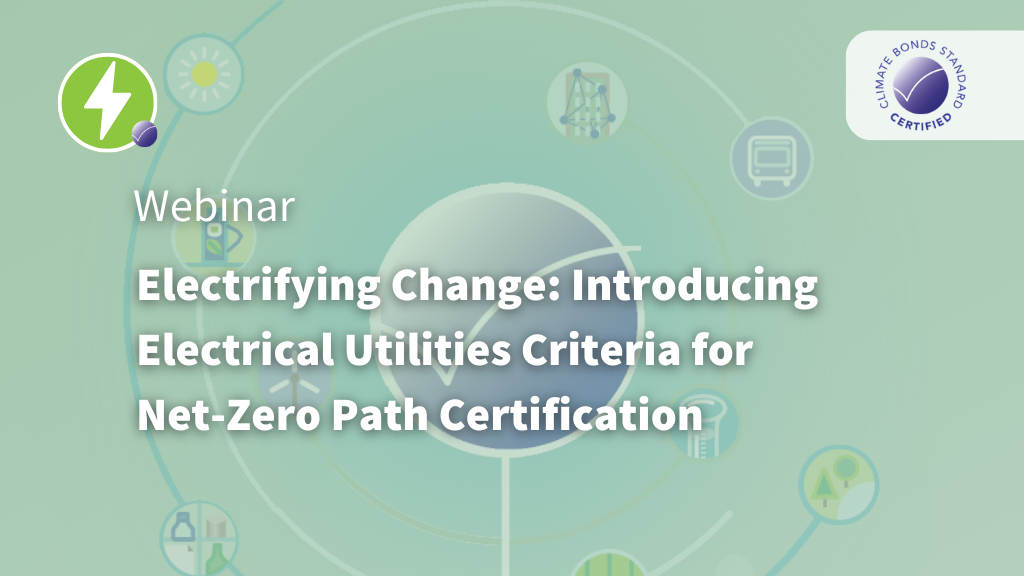Launching the Electrical Utilities Criteria for Climate Bonds Certification: A Path to Decarbonisation
Climate Bonds Electrical Utilities Criteria, now available for Certification, marks a significant expansion in the sectors covered under the Climate Bonds Standard. In the face of the electricity sector standing as the largest contributor to global greenhouse gas (GHG) emissions, these criteria underscore a critical role in driving the path to net-zero emissions and fulfilling the Paris Agreement's ambitious objectives.
Central to this is the provision for Entity Certification, with the Electrical Utilities Criteria offering a comprehensive, science-based framework. Electrical utilities aiming for their financial instruments, including bonds, loans, and other debt instruments like sustainability-linked debt, to be recognised as a Certified Climate Instrument / Entity will find these criteria indispensable. By rigorously evaluating both Mitigation Requirements and Adaptation & Resilience Requirements, the criteria ensure that financial investments contribute effectively to limiting global temperature rises to no more than 1.5°C above pre-industrial levels, while bolstering our energy systems' resilience against climate change impacts.
A Focus on Generation Technologies
At the heart of these criteria is a comprehensive focus on the generation segment of the electricity value chain. Recognising that electricity can be produced using a diverse array of technologies, each with its own global warming potential (GWP), fossil energy consumption, and electricity cost, the Criteria serve as a guide to navigate this complex landscape. From mature technologies to emerging or future innovations, the Criteria address the need for a balanced mix of electricity generation technologies to meet future demand while adhering to stringent climate restrictions.
This includes not only the electricity produced directly by an entity but also the electricity purchased on the grid for distribution or trading. Such a holistic approach ensures that every aspect of electricity generation and supply aligns with the overarching goal of decarbonisation.
Resources:
The Last Word
The transition to a low-carbon future hinges significantly on the decarbonisation of the entire energy system, with electricity utilities playing a critical role. The anticipated rise in electricity's share of total final energy consumption to more than 50% by 2050 underscores the urgent need for clear, actionable criteria to guide the sector towards net-zero emissions. These criteria aim to facilitate the reduction of electricity emissions and support the shift away from unabated fossil fuels towards an increase in renewable generation capacity, especially wind and solar.
With the current rate of investment, reaching the necessary renewable energy capacity would take 90 years
— a timeline incompatible with our climate objectives. The Electrical Utilities Criteria are designed to accelerate this transformation, aiming that the necessary decarbonisation occurs within the next 30 years.
As we stand on the brink of a crucial shift in our energy systems, the Electrical Utilities Criteria for Certification under the Climate Bonds Standard emerge as an essential tool in mobilising the investments needed to power a sustainable, low-carbon future.
Join us for the launch webinar to participate in the conversation for investment in the electricity sector.
For more information on how to apply for certification or to learn more about the Electrical Utilities Criteria, visit our website.
‘Till next time,
Climate Bonds.


